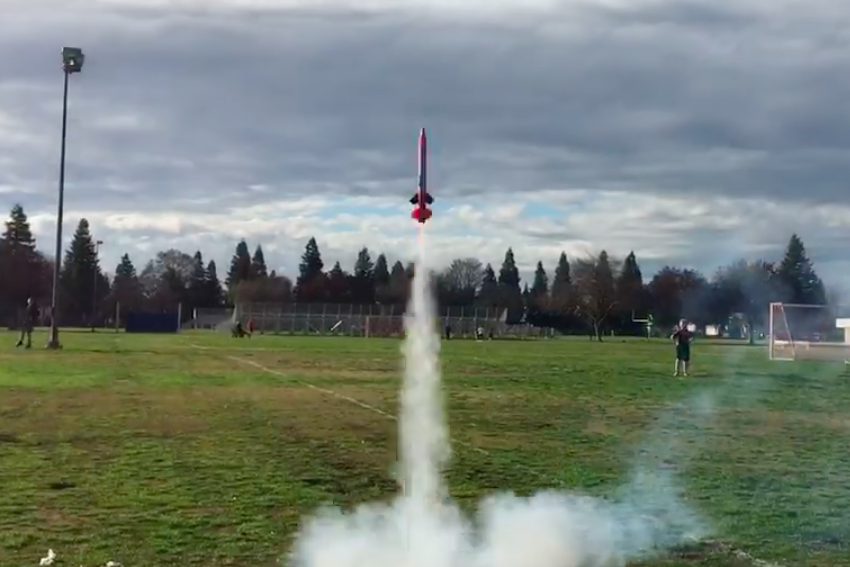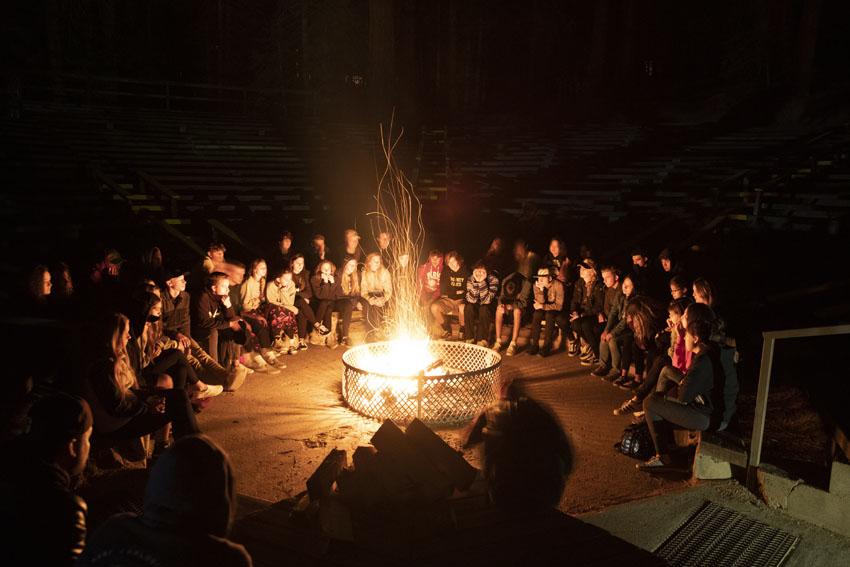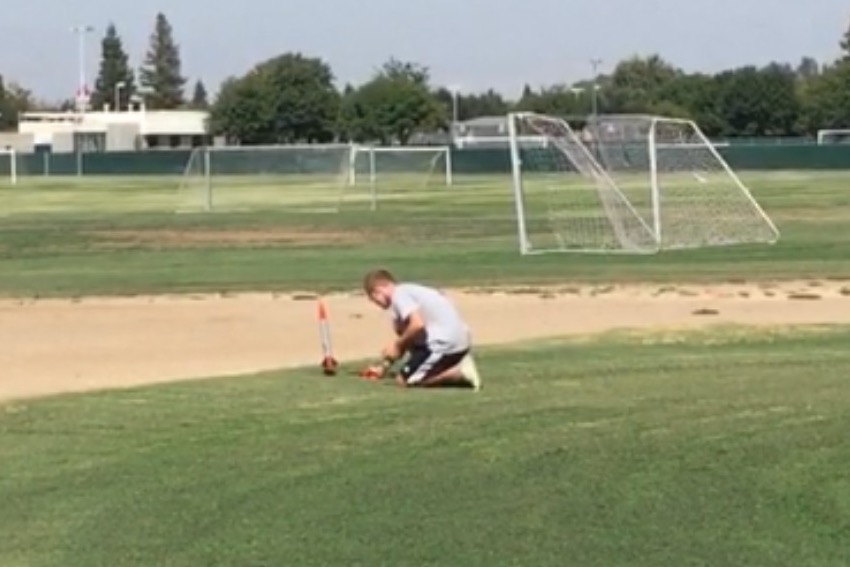Juniors Bryce Foshee and Andrew Rieker practice rocket assembly
In their previous blog, Andrew Rieker and Bryce Foshee shared the stories of their introductions into the field of rocketry. They also announced their intentions to start a high school rocketry club, the FC Rocket Program.
The experiments, chemicals and methods used in this blog are not recommended for those without a full understanding of reactions and rockets. Before attempting to build rockets or use any chemicals, proper research and safety precautions must be applied. For further reference on rockets or rocket-building, read “Rocket Manual For Amateurs” by Captain Bertrand Brinley, also apply to join the new Fresno Christian Rocket Program by contacting Bryce Foshee or Andrew Rieker.
Andrew Rieker receives first model rocket, early 2018
Under a hastily decorated tree stood an assortment of packages. A large, generic brown box peaked my curiosity. My turn came, and I moved over to the tree to collect the prize. On first glance, I failed to understand the markings on the outside of the box inside.

When I understood a rocket kit was inside, I felt ecstatic. Later that week I set up to fire one of the rockets in the box and it was quite complex. The first rocket needed glue and construction. It was crude and almost fell apart in the air when I fired it. Fortunately, the other rockets assembled in a mere thirty seconds and once ignited, performed well.
The kit came with engines, which slipped into the rocket’s base. Sliding down the launch rod, I inserted the electric tongs used to ignite the rocket. Finally, the moment had come to fire off the rocket. 3,2,1… Nothing. I was bummed. I wiggled a few things and nothing happened. Eventually, I tried holding down the button and ignition.
Only fitted with a B-level engine, the missile streaked 400 feet and lost acceleration after engine burnout, while simultaneously ejecting the parachute, assisting its feathery descent to the ground.
The next launch came right after the recovery and produced equal amounts of fun along with similar results. The recovery this time was slightly more difficult, due to wind. I received three engines so three launches were conducted. I also experienced difficulties with the launch remote, but this time I figured it out sooner.
On the way home I stumbled upon the idea of using real fuse, like the stuff that lights fireworks on the fourth of July. I ordered some for a couple bucks. It worked without a hitch, so I gave a few feet to Bryce for his engine testing.
In the following podcast, Andrew Rieker and Bryce Foshee reminisce their fuze debacles.
Bryce Foshee learns early lessons from experimentation
When Andrew showed me his launch videos, I could not believe it at first. Rocketry was the most recent in a long line of pipe dreams. But Andrew’s launches showed that sending a rocket in the air was not just feasible, but possible for me.

I started experimenting a few months after Andrew. For $40, I bought an electric skillet and a few pounds of potassium nitrate. After pilfering cardboard tubes from grocery store plastic bag dispensers, pinching clay from my sister and borrowing some sugar from my mom, I had everything necessary for a test motor.
As mentioned in the previous post, the first several tests resulted in failure. Despite these failures, I learned one of the most important lessons amateur rocketry has taught me to date; there is more than one type of learning.
The first way I learned about rockets was absorbing base knowledge. This comes from reading on a whim, watching YouTube videos or surfing Wikipedia. Assembling a base knowledge is key for starting, but alone, hardly life-changing.
Next, I started studying. I found that when reading for the specific purpose of answering questions, I learned a lot more. Studying allows one to develop a working understanding of a field, but I still wanted to go deeper.
The hardest, most demanding way to learn about rocketry is actually building rockets. Any errors I made in studying became painfully apparent when I tested my first rockets. However, I found building rockets to be the most rewarding way to learn.
The primary reason Andrew and I founded the FC Rocket Program is to learn by building rockets scientifically. If rocket science sounds as exciting to you as it does to us, join us!
For the previous blog read BLOG: Amateur rocketry reaches for the skies, or read the next blog, BLOG: Amateur rocketry No. 3: Juniors explain basic rocket science.
Visit our site at fcrocketprogram.wordpress.com for more details and updates.
For more articles, read College Corner: College fairs, NACCAP benefits and Freshmen enter high school, grow from new experiences.
Andrew Rieker can be reached via email.
Bryce Foshee can be reached via Twitter @brycer_f and via email.







